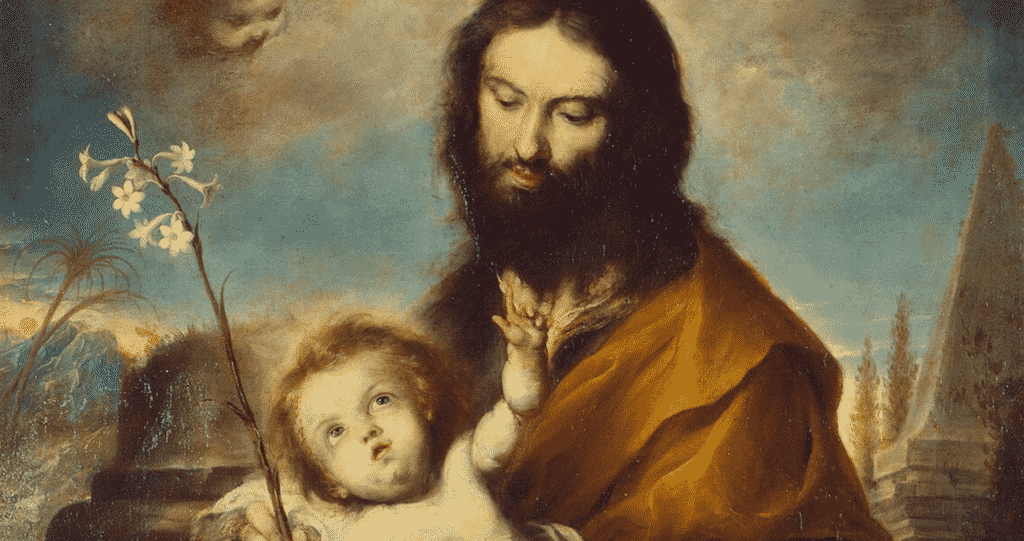St Joseph as Hidden Tekton King: Exploring the Davidic Identity of Joseph
In a previous post, we discussed how Saint Joseph is described in the original Greek New Testament as a τέκτων or “tekton,” which is usually translated as “carpenter,” but it is better translated as “artisan.” A tekton is anyone involved in physical construction and repair. Joseph may have worked with stone, wood, metal, cement, clay, and other substances. The words “technology” and “architecture” are related to the Indo-European root for tekton.

I’m going to argue that “tekton” means more than carpenter, and that it signifies Saint Joseph as a “Master Builder” like his forefathers King David and King Solomon. So let’s go…
We often forget that Saint Joseph is a hidden king. In JRR Tolkien’s The Lord of the Rings, Aragorn is the rightful hidden king who does not rule but patiently waits in hiding for the proper fullness of days during which he will inaugurate his reign. We see this come to fulfillment in the aptly named third volume Return of the King.
Saint Matthew tells us that Saint Joseph is the heir of King David. I won’t post the entire. genealogy, but you can read it at Matthew 1:1-17:
Here is the abbreviated version:
And David was the father of Solomon by the wife of Uriah, and Solomon the father of….Joseph the husband of Mary, of whom Jesus was born, who is called Christ.
Saint Joseph is the same kind of king of Aragorn. He is the true genetic heir of David. However, there has been a tragic political shift, and the descendent of David no longer rules from the Palace of David. Instead, Jerusalem is occupied by the imposter King Herod and by uncircumcised idol-worshipping Romans. Like Aragorn, Joseph lives in exile. Joseph lives in Nazareth.
So Joseph is a tekton. A craftsman or artison. This should lead our well-read biblical minds back to the stories of King David and King Solomon:
- David built Jerusalem.
- David built a royal palace.
- David received the divine blueprints to build the Temple of God.
The Davidic Covenant works like this:
“God will be a house (genetic family line of kings) for David and David will build a house for God (physical Temple).”
[To learn more about the 7 Covenants and how that map on to Thomas Aquinas plan of 3 Epochs, please explore the New Saint Thomas Institute’s module lesson on Covenant Theology in “Redmptive History.”]
In royal terms, a house is a legal genetic line. For example, the “House of Windsor.” This is the divinely establish “House of David.” God promises David, “And your house and your kingdom shall be made sure forever before me. Your throne shall be established forever” (2 Sam. 7:16). But the Davidic covenant also has a “house of God” built in Jerusalem in which God shall dwell to establish and regulate David’s kingdom until the advent of the appointed David Messiah.
King David was told by God that he had too much blood on his hands to build the Temple. Instead, David’s son Solomon would build the house/temple. Solomon the son of David becomes the tekton of God’s kingdom. He builds the house of God. He has the ark of the covenant placed in the Holy of Holies. He makes it beautiful and by his prayers, the Divine Glory fills the Temple.
Think now to Joseph. He is a royal king. He builds a house for Mary (Ark of the Covenant) where she is protected and guarded. The Divine Presence (Word made Flesh) comes to inhabit the house that he built. Joseph is the Davidic King. He humbly rules and reigns over Mary and Jesus (even though they are both superior to Joseph).
The irony is that at the actual birth of Christ, Joseph and Mary are literally without a physical house. Tradition places them in a cave stable. We come to learn from Christ that the true Temple is Christ Jesus. Christ says, “Destroy this Temple and I will raise it in three days,” referencing the Temple of his Body.
David is a tekton and he is building a house. But the house he is building is the body of the Christ Child. The food and the nurture comes from David. Consequently, David is a tekton of Christ’s body. We are fed on the Eucharist. But Saint Joseph provided food to the Jesus who is the Eucharist.
Joseph is the Bread-Winner for the Bread of Life.
The climax of the Davidic Covenant finds the king-tekton in exile building a secret Temple of the Holy Spirit – the Second Person of the Trinity incarnate in human flesh. As with King David, David do not conceive the design for the Temple in Jerusalem. They came from Heaven.
Likewise, Joseph did not conceive the New Temple of New Covenant. He does not conceive Jesus. The Logos came from Heaven. Joseph received (David) the plan, and then he oversaw (Solomon) the growth and establishment of that Temple. This is why when Christ reaches maturity (age 30) Joseph is already gone. He perfectly executed his divine vocation as guardian of the hypostatic union.
Happy Feast Day of Saint Joseph the Worker,
Dr. Taylor Marshall
If you’d like to take online classes with Dr. Marshall,
please visit the New Saint Thomas Institute (available in 47 nations).
What to Watch Next
SHOP THE TAYLOR MARSHALL STORE
Dive Deeper

GET CONFIDENT IN YOUR FAITH
Explore the fascinating world of Catholic teachings with Dr. Marshall. Together you’ll unpack the brilliant answers the Church gives to tough questions about the Faith. The best part: you go at your own pace. Start this exciting journey today.


 >
>


